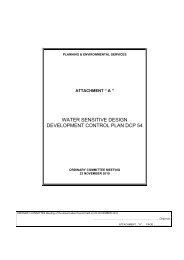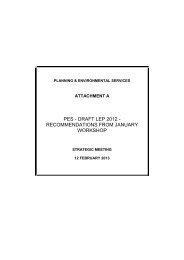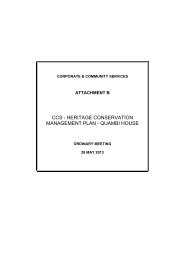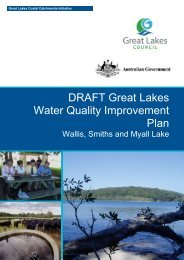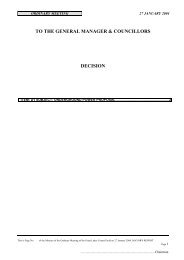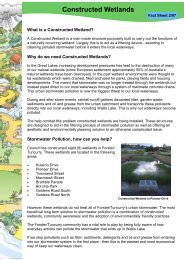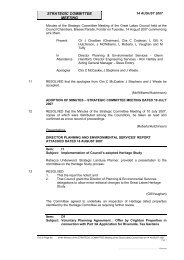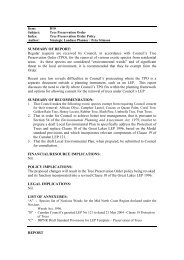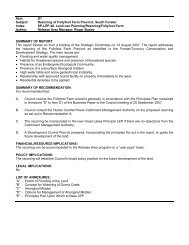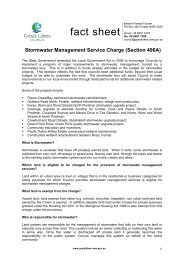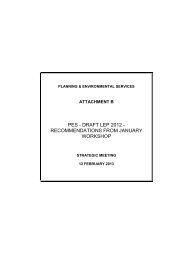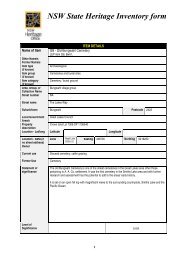13.2 The Wallis Lake Estuary Management Committee - Great Lakes ...
13.2 The Wallis Lake Estuary Management Committee - Great Lakes ...
13.2 The Wallis Lake Estuary Management Committee - Great Lakes ...
You also want an ePaper? Increase the reach of your titles
YUMPU automatically turns print PDFs into web optimized ePapers that Google loves.
<strong>Wallis</strong> <strong>Lake</strong> <strong>Estuary</strong> <strong>Management</strong> Plan<br />
1 Introduction<br />
1.1 Purpose of the <strong>Wallis</strong> <strong>Lake</strong> <strong>Estuary</strong> <strong>Management</strong> Plan<br />
<strong>The</strong> purpose of the <strong>Wallis</strong> <strong>Lake</strong> <strong>Estuary</strong> <strong>Management</strong> Plan (WLEMP) is to coordinate management<br />
efforts of local government, state government agencies and community to address issues regarding<br />
the social, cultural, environmental, recreational and commercial amenity of the <strong>Lake</strong>. <strong>The</strong> plan<br />
provides a schedule of achievable and targeted management actions that have been developed with<br />
and are endorsed by all stakeholders.<br />
<strong>The</strong> WLEMP has been developed in accordance with the State Government’s <strong>Estuary</strong> <strong>Management</strong><br />
Program. It will operate in concert with a number of other policies including Ecologically Sustainable<br />
Development, the NSW Coastal Policy, the NSW <strong>Estuary</strong> Policy and other relevant local government<br />
policies (eg Development Control Plans).<br />
Local remedial plans and strategies for the estuary and catchment already in existence (see section<br />
13.1) will not be replaced by the WLEMP. Instead the WLEMP will provide a strategic framework to<br />
ensure elements of these plans and strategies are implemented in concert with the broader<br />
management goals of the estuary community.<br />
<strong>The</strong> WLEMP will address management issues of the <strong>Wallis</strong> <strong>Lake</strong> water body and its tributaries up to<br />
the tidal limits, the foreshore and other lands adjacent to the estuary including wetlands and drainage<br />
reserves that are functionally related to the estuary.<br />
1.2 Objectives<br />
<strong>The</strong> <strong>Wallis</strong> <strong>Lake</strong> <strong>Estuary</strong> <strong>Management</strong> Plan aims to provide a strategic framework within which<br />
management measures can operate effectively to:<br />
1. conserve, protect and enhance areas of significant cultural, ecological and aesthetic value ∗<br />
2. restore or remediate degraded areas<br />
3. balance the recreational, commercial, social and cultural needs of the estuary<br />
4. increase the economic value of the estuary in an ecologically sustainable manner, and<br />
5. increase community awareness of estuarine processes and management issues.<br />
1.3 <strong>The</strong> estuary management process<br />
<strong>The</strong> <strong>Estuary</strong> <strong>Management</strong> Process (Figure 1.1) is outlined in the <strong>Estuary</strong> <strong>Management</strong> Manual<br />
(1992). This manual was developed to assist communities to implement the New South Wales<br />
Government’s <strong>Estuary</strong> <strong>Management</strong> Policy of 1987. <strong>The</strong> goal of this policy was for <strong>Estuary</strong><br />
<strong>Management</strong> Plans to be developed and implemented for all estuaries in New South Wales.<br />
∗ Aesthetic value is defined here is a combination of both water quality and scenic attributes.<br />
1




